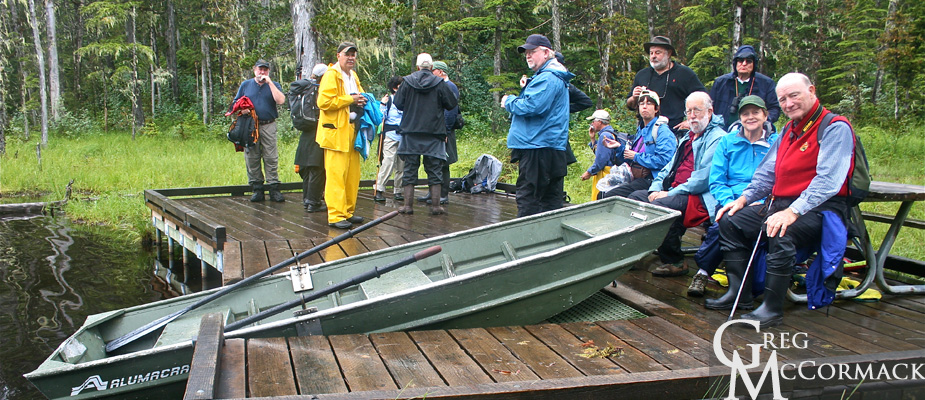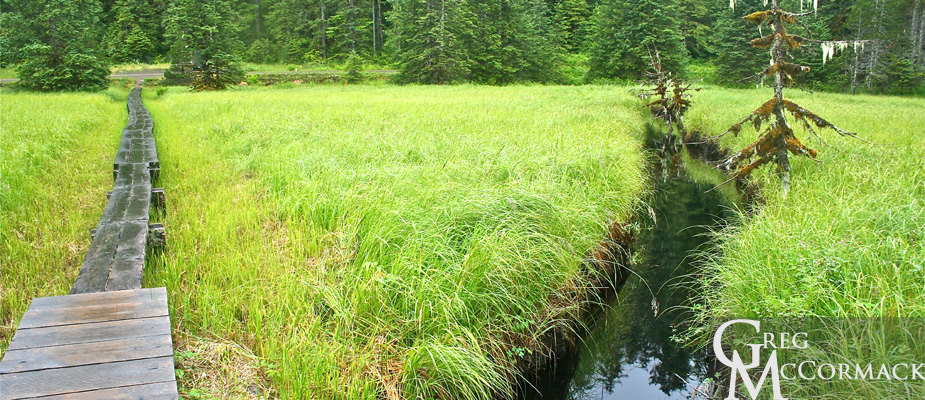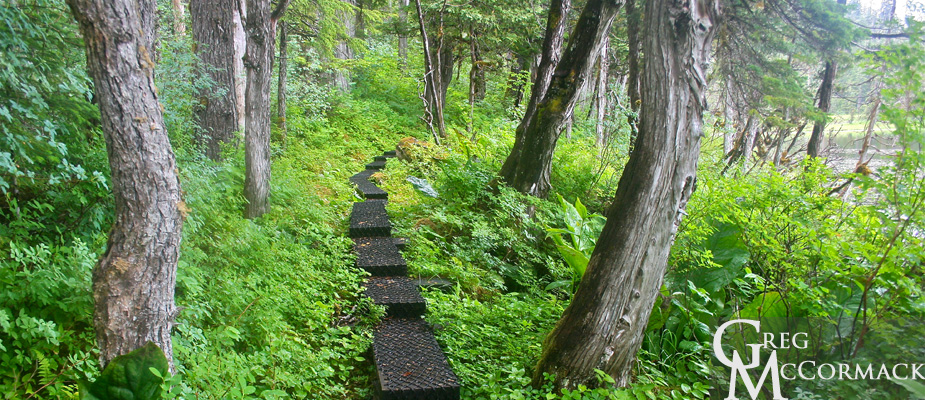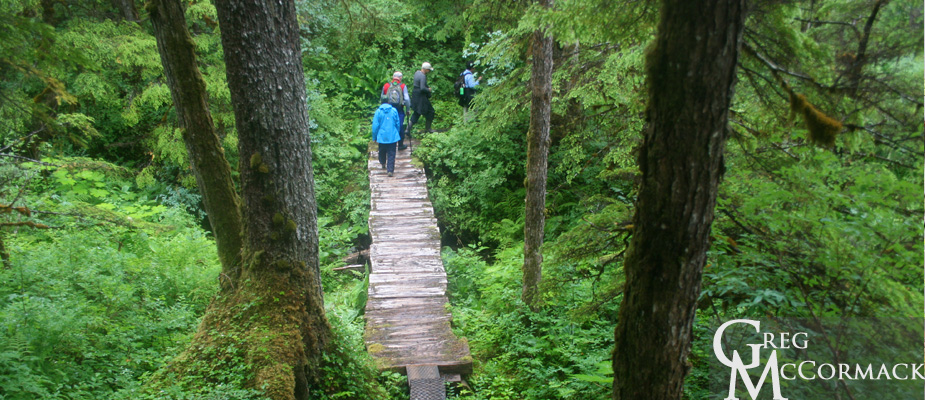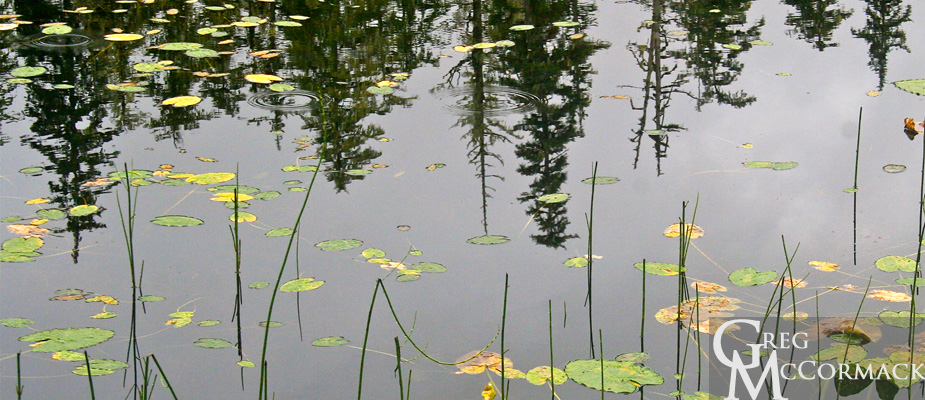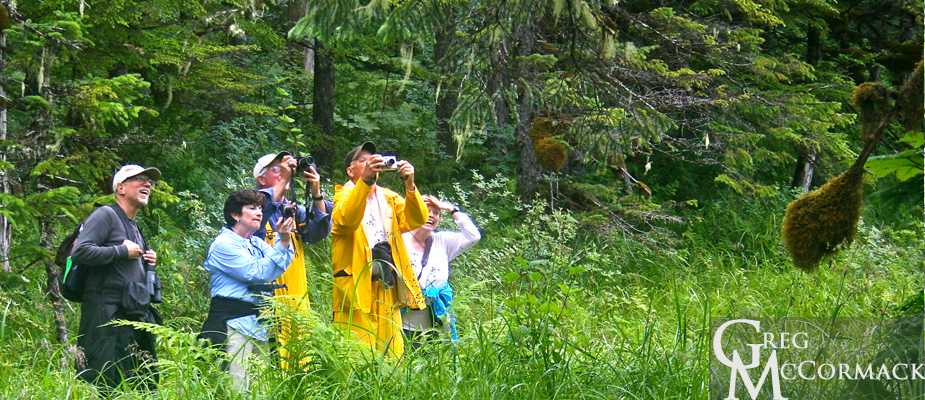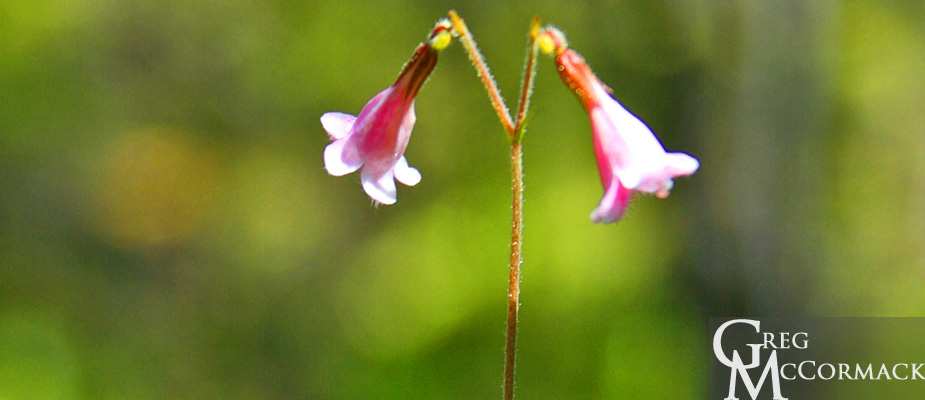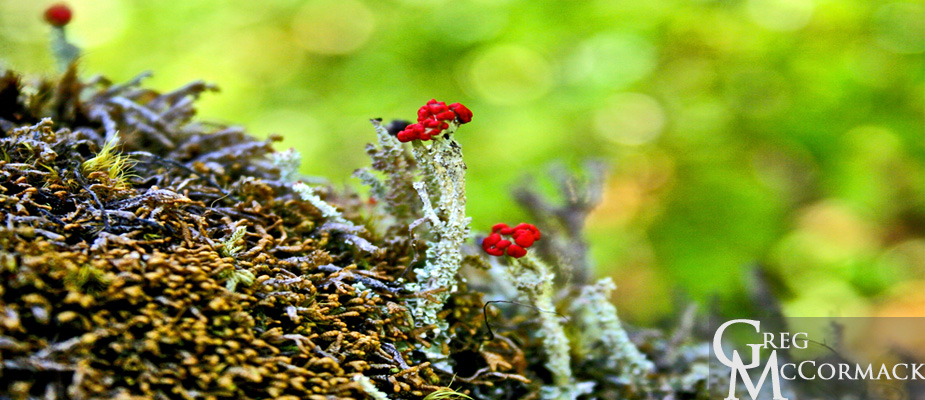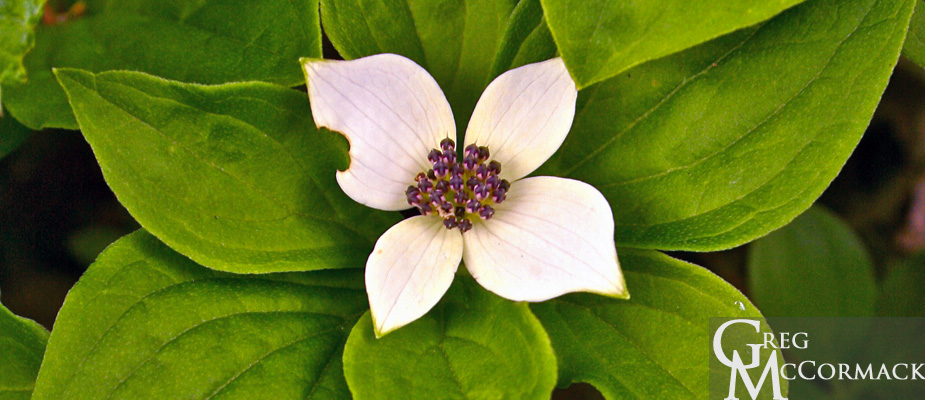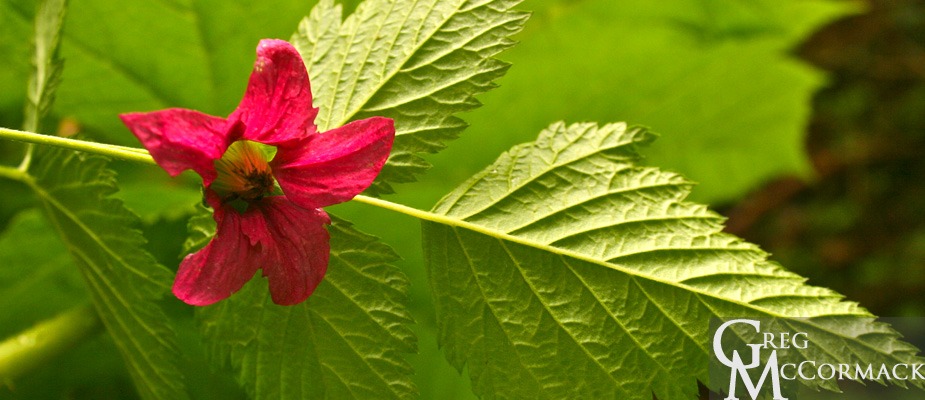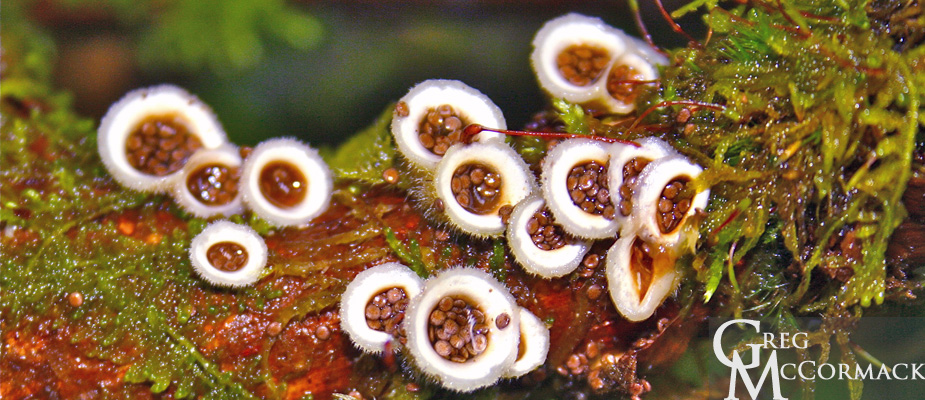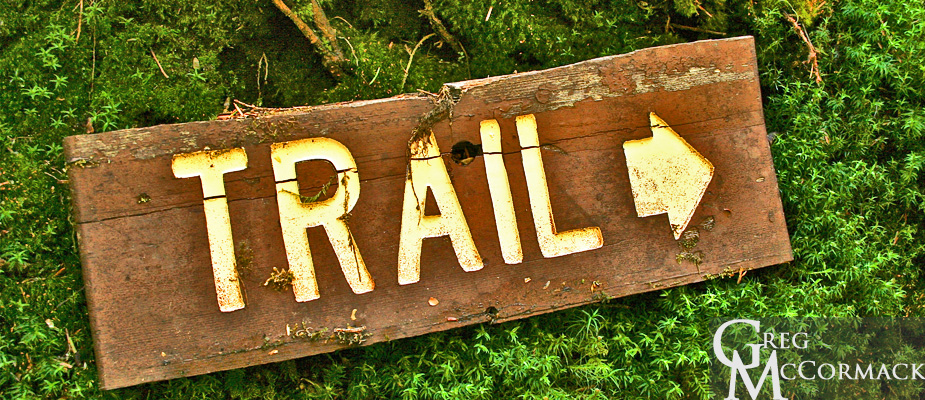Search results
Tuesday | July 19
October 3, 2011 by admin
Filed under InnerSea Discoveries
Ideal Cove
“The first requirement of a naturalist is that he be curious. He should be capable of being astonished and eager to find out.” –Erwin Shroedinger
A persistent drizzle with low-lying fog greets us this morning. We offer long hikes on the Three Lakes Trail, a Tongass National Forest maintained system of boardwalks that loop in the forest around some kettle ponds. Part of the trail is along a logging road that is accessible for cars from the nearby town of Petersburg. Nonetheless the popular trail is very scenic.
The morning hike is about 5.5 miles long and we do the loop in a clock-wise fashion to Crane Lake first and then Hill Lake. About half of the trail is along 16-inch wide boardwalk. The trail is in good shape except for a few spots where support beams have rotted or the netting that keeps you from slipping on algae slicks has fallen-off the boardwalk.
The vibrant green vegetation are “eye-candy” for all of us sauntering through the front-country in Petersburgs’ backyard. Skunk cabbage, bunch-berry dogwood, leather ferns, surround the boardwalk through the forest sections and rushes, sedges and bog orchids are adjacent to the trail in the muskeg areas.
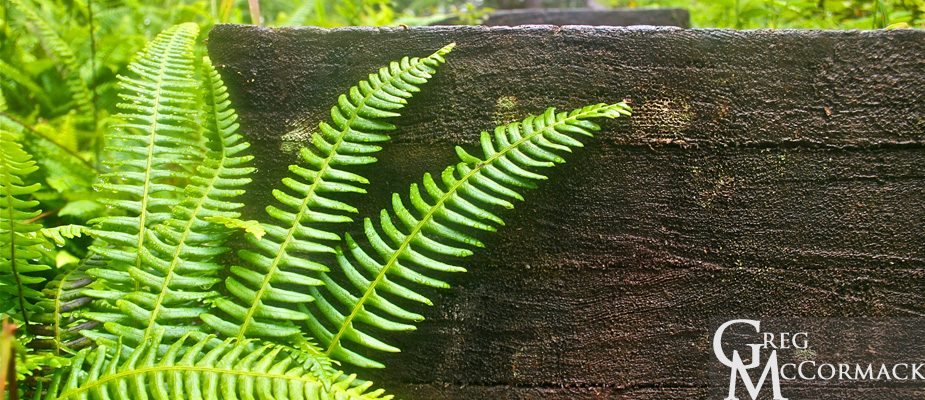
We are tempted to take a canoe out on the lake that is provided and maintained by the forest service. We did stop at picnic tables and were surprised by a sighting of a porcupine climbing up a spruce tree.
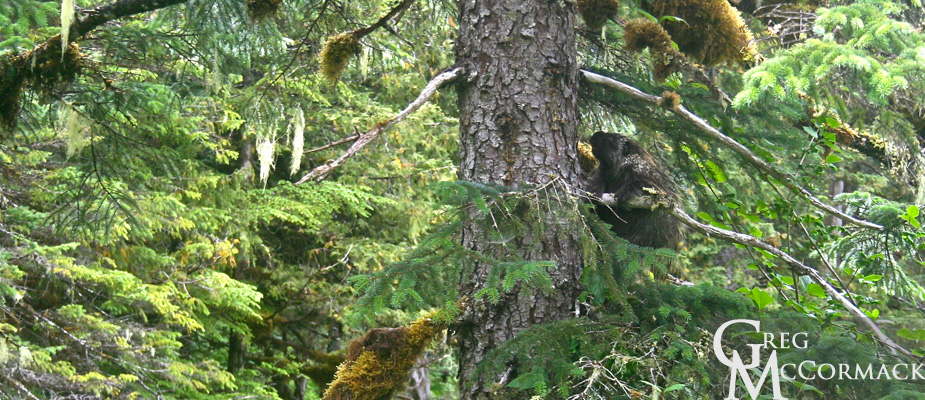
Cut trees is about all we see in the way of mammal sign. Beavers are quite active in the area and it never ceases to amaze how big a tree they can cut down. I’ve read about a researcher that played a tape recording of running water near a beaver and it tried to build a dam near the hidden tape recorder. Apparently, when the sound of running water stops, the beaver discontinues building the dam.
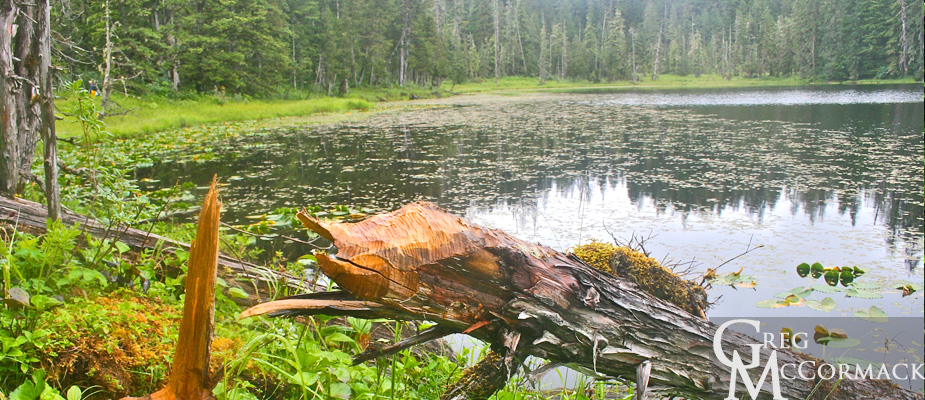
There are long sections of narrow trail where it is impossible to see your hiking partners around the next bend. Passing is not an option for folks who are behind photographers!
The reflections on the lake along with emergent aquatic vegetation such as the pond lily make for great subjects for photographers.
Periodic “National Forest” signs showing a symbol of a snowmobiler remind us one of the popular past-times in the area during the long winters here in Southeast Alaska. Some are pockmarked with bullet holes. I suppose vandals like the sound a bullet makes when it hits metal?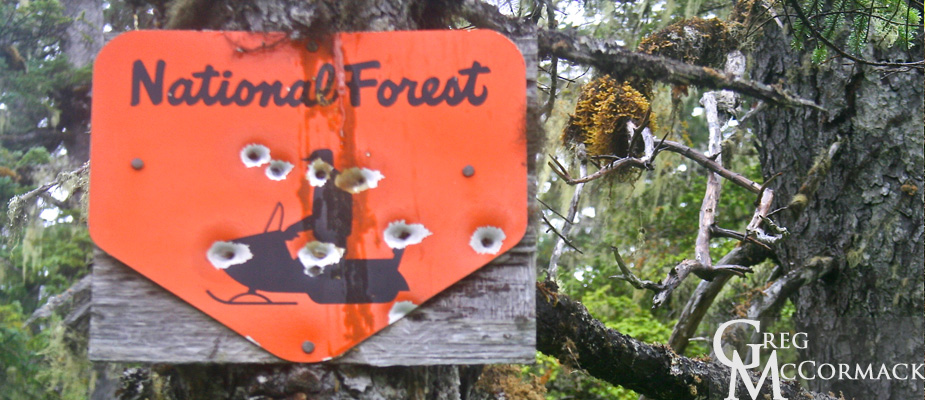
Mossy epiphyte platforms are in abundance on the dead, low-lying branches of the spruce/hemlock forest. On the largest, old-growth trees, the moss-covered branches are nesting sites for the seabird known as the marbled murrelet.
Back aboard the M/V Wilderness Discoverer, everybody is happy to peel-off wet layers of clothing and warm-up with hot drinks and camaraderie with fellow shipmates.
Sunday | July 10
September 26, 2011 by admin
Filed under InnerSea Discoveries
El Capitan
“Everybody needs beauty as well as bread, places to play in and pray in, where nature may heal and cheer and give strength.” –John Muir “The Mountains of California”
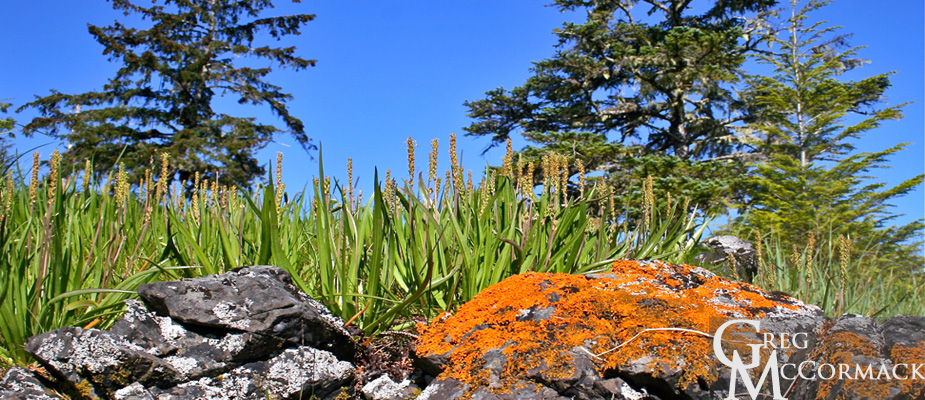
All of our guests are asked to go through our three “station rotation” trainings in kayaking, stand-up paddleboarding, small boat and bear safety.
Each “evolution” occurs in a different area of the ship (two in the lounge and one on the top deck).
After grabbing paddle jackets and depositing them in the lockers, adventure-seekers are ready for disembarking on our first full day of activities at Prince of Wales Island.
We anchor at the north end of El Capitan Passage where Dry Pass enters a bay approximately ½ mile wide by 3 miles long.
Despite the fact that there has been heavy logging in the past (clear cuts are visible along with a logging road on the north shore that leads to a small, private lodge), the place is peaceful and scenic.
My job this morning is to provide a “kayak clinic” for beginning kayakers out in the bay. I demonstrate paddling techniques, bracing, how to turn around, get the rudder up and down among other pointers.
“We could try the ‘Eskimo Roll’ if you’d like?”, I asked jokingly. The temperature of the waters here are in the high 40’s to low 50’s Fahrenheit, or about 10 degrees Celsius. If we were to practice rolling and submerging, we’d want to don dry suits.
Highlights along the shoreline include a Sitka black-tailed deer (doe with fawns) browsing on grasses above the beach wrack or strand zone, bald eagles at their nest, breaching salmon and best of all: Sunshine!
On our way back to the ship, I recruit other kayakers to help find macro-algaes, in particular the bull kelp. The pneumatocyst or air float can mimic the head of an otter, especially when there is a wind chop or swell on the sea surface. We find some un-attached Nereocystis leutkeana floating with its holdfast attached to a tiny rock. We haul it aboard and put it in a bucket for further examination later today.
In the afternoon I lead a less intense version of a forest walk that doesn’t include 367 steps up a steep hill to a cave.
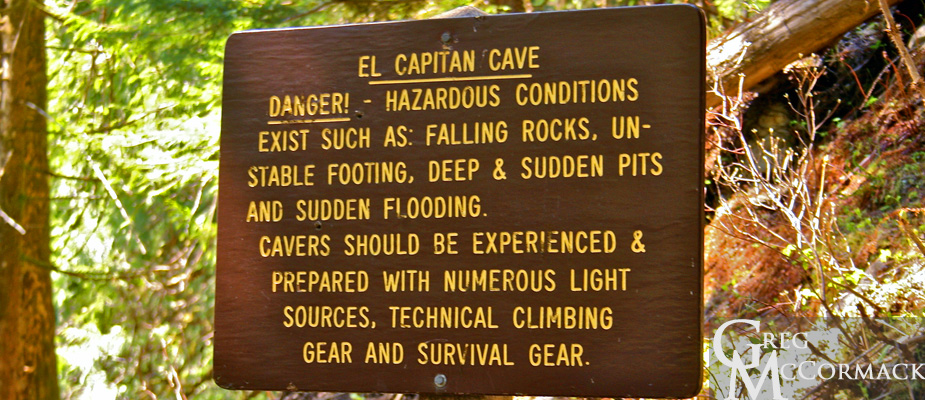
After my introduction explaining safety in bear country, I address my group of intrepid travellers with the theme for the day, one that has been a favorite of mine over the four decades that I’ve been leading interpretive walks:
“Folks, instead of hiking, we will saunter—serendipitously–along these Forest Service roads. Horace Walpole, a British writer in the mid-1700’s, wrote a fairy tale called the ‘Three Princes of Serendip’. They had a knack for the unexpected, for discovering things that they had no idea they’d find. So let’s use all of our senses and see what we might come across over the next 90-minutes.”
Our finds included the stinky raceme of the skunk cabbage, scatological findings from several mammals, squirrel pine cone middens, flowers, mushrooms and various birds that I identified “by ear”, amongst other delightful finds.
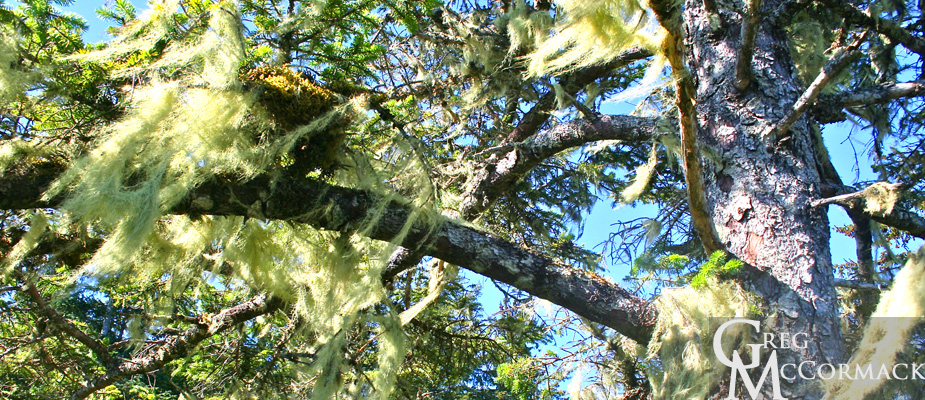
Back aboard, I give a talk entitled “The Multifarious Uses of Nereocystis leutkeana”, a demonstration of the marvelous seaweed called the “bull kelp”. There are a lot of histrionics involved, including audience participation and hand-held specimens.
Here’s a few of the highlights:
• Bull Kelp is an annual that can grow to 20 meters
• The range of this nearshore brown algae is from central California to Alaska
• The decimation of the (urchin-eating) Sea Otter by the Russians led to an increase in the herbivorous (kelp-loving) sea urchins and a subsequent decrease in kelp and what the kelp forest harbors, including many dozens of invertebrates and fishes
• Native American uses include food and medicine, and recreational uses including ceremonial speaking tube, musical instruments, siphoning hose, jump rope, lion tamer, target practice, etc.
I entertain folks by using a knife to cut the kelp specimens and volunteers entertain everyone by using the hollow stipe as a trumpet-like horn, bugling the announcement for dinner!
Tuesday | July 5
September 14, 2011 by admin
Filed under InnerSea Discoveries
“O’ Earth, What changes hast thou seen?” –Alfred Lord Tennyson
We offer several activities for guests, including paddle boarding, kayaking and a couple of different hikes, including all-day and half-day hikes. I co-lead a kayak along the lee side of Ruth Island and later a half-day hike up the Patterson River. There are lots of beautiful, verdant plants to point-out to my fellow adventure-seekers.
We see bunchberry dogwood, false lily-of-the-valley, skunk cabbage, salmonberry, several species of fungus and many other herbs, shrubs and trees.
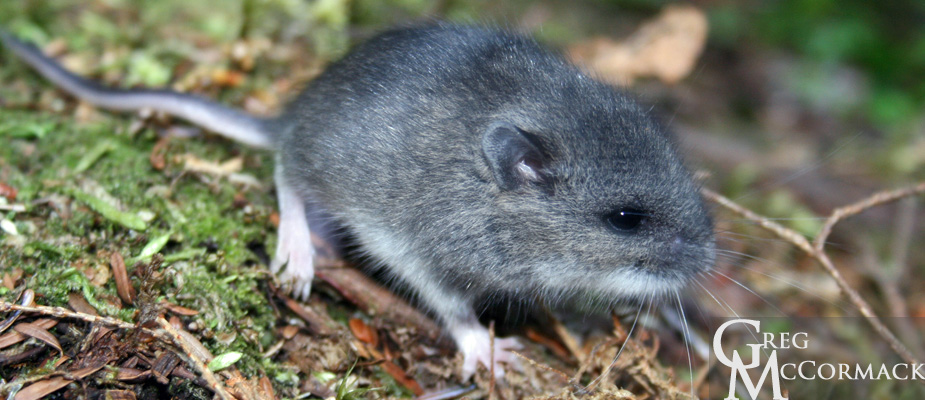
Deer Mouse
Our hike is along ATV trails. We see evidence of old cabins and (hard-to-believe) some dung from cows! Apparently this is not part of Tongass National Forest. Our scatological discovery-of-the-day were moose pellets. I pick-up a hand-full and interpret the fascinating life history of this huge Cervid species: “The moose get quite large, males up to 1600 pounds and females up to 1300 pounds.”
“Moose are herbivorous, feeding on deciduous trees such as willow and birch. Moose will eat as much as 40 pounds of willow leaves in a day, enabling the growth of huge antlers.”
“Antlers are shed in the late fall, early winter. Males are solitary except for the rut. The rut is in the fall. This is when the testosterone in the males is at its peak. Males battle it out for access to females. Subordinate male bulls are sometimes referred to as “sneaker” males for sneaking into a harem while the dominant male is off fighting another male.”
We enjoy the riparian corridor adjacent to the Patterson River. It would take all day to follow the trail up to the Patterson Glacier.
Rumor has it that our company dropped-off several kayaks by helicopter on the lakeshore just a couple of miles from the face of the glacier. One group this summer has made it all the way up with the owner of the company leading the intrepid hikers. It was a strenuous adventure of over 10 miles.
Back aboard the WND, we traverse the famous Wrangell Narrows that separates Mitkof and Kupreanof Islands. Anchorage is just a few miles from Wrangell, which lies near the 17-mile wide delta of the mighty Stikine River.


